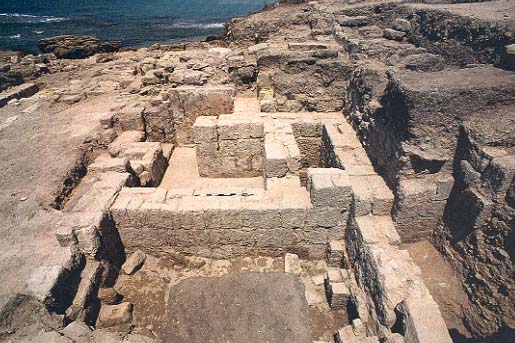Image Details

Courtesy of the excavation team
Originally part of Herod’s dining suite, these rooms were later used as a bath complex and then as a service area. The rooms are north of the palace’s main dining room (see plan). A black-bordered white mosaic covered the floor, while the sandstone walls were polished and plastered to give them the look of finer stone. The excavators discovered an earlier marble floor underneath the mosaic floor; they also noted that the palace’s plastered walls had originally been painted red, the rooms subdivided and the broad doorways narrowed. Based on pottery and lamp remains, the excavators date the palace’s renovation to late in Herod’s reign or to early in the reign of his successors. They date the construction of the palace to as early as 22–10/9 B.C.E., the period when Caesarea itself was built.
